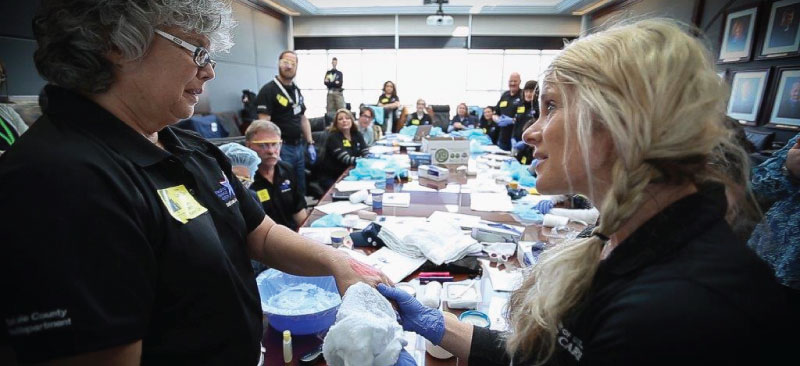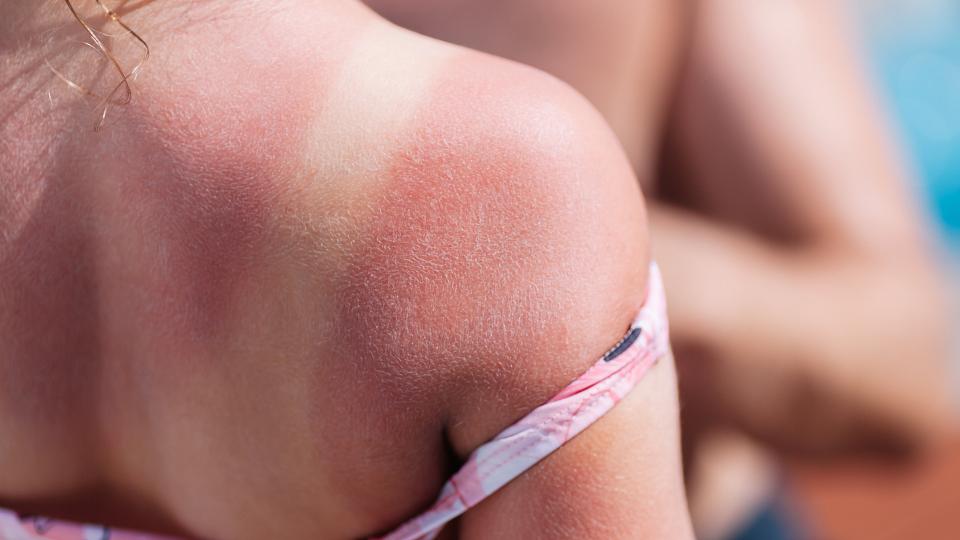About Skin & Burns
When most people think of burn injuries, they think of damage to the skin. Burns also affect many other areas of the body because the skin plays such an important role in protecting the body from the environment. Understanding skin and how it contributes to body function can help us understand what happens to the body after a burn.
Skin is the largest (and heaviest) organ. Eight pounds of skin cover the average adult, almost 23 square feet!
Protection
Much like a knight’s armor, skin is the body’s protective covering. It protects from a lot of things without us even having to think about it. It provides a barrier to viruses and bacteria, helping to prevent illness. It blocks the harmful parts of sunlight that can cause damage to cells. It’s also waterproof, keeping the water in the body from escaping, and keeping us from absorbing water like a giant sponge every time we take a shower.
Sensation
Thousands of microscopic nerve endings live in the skin, allowing the brain to interact with its environment—in other words, to feel! Different nerve types feel different sensations; some nerve types detect temperature and pain, some detect touch, while others detect vibration, and tell the brain the location of different body parts in relation to each other. It’s an invisible, complex system that’s quite literally at our fingertips.
Temperature Regulation
The skin also helps keep the body at the right temperature to function, a cozy 98.6 degrees Fahrenheit. Most of the time the temperature of our surrounding environment doesn’t match this perfectly (thank goodness), which means without a protective mechanism we would constantly be either losing or gaining too much heat.
Skin solves this problem by acting like the most advanced jacket ever imagined: it senses when the surrounding temperature is too cold and adjusts to keep body heat from escaping. Likewise, when we get too hot, our skin adjusts by opening pores and sweating, allowing the body to cool down.
Healthy Bones and Hormone Production
Skin helps build and maintain healthy bones. Skin produces vitamin D, which helps absorb calcium and strengthen bones. Skin also produces and reacts to other hormones (the body’s chemical messengers) to help maintain many body functions.
Movement
Skin is strong enough to protect us, but also flexible enough to allow us to move freely. These properties come from the proteins that help compose skin: collagen gives skin strength, while elastin gives skin flexibility.
How Burns Damage Our Skin
Skin Layers
Skin has three main layers:
- the epidermis,
- the dermis, and
- the subcutaneous tissue (hypodermis).
Epidermis—The epidermis is the very outer layer of skin. It’s largely made up of keratinocytes, or cells that contain keratin. They form layers that continuously grow outward replacing the top layer of skin cells.
Dermis—Under the epidermis is the second layer of skin, called the dermis. It is packed full of the components that skin uses to function as an organ system. This layer contains the collagen and elastin that makes skin strong and stretchy, as well as blood vessels, nerves, hair follicles, sweat glands, and oil-producing glands.
Subcutaneous Tissue (Hypodermis)—“Subcutaneous tissue” is a fancy way of saying “fat,” which is what this layer is composed of. But fat isn’t all bad: this layer cushions us, works as insulation to help with temperature regulation, and of course, provides energy storage that our bodies can use in times of starvation or increased energy demand. Under this layer are our muscles, bones, and internal organs.
Type of Injury Determines the Burn
Different burns affect skin and the rest of the body in different ways. The mechanism of injury (that is, what actually caused the burn) determines wound patterns.
The first layer to be damaged is the epidermis. Deeper layers are damaged in more severe burns.
Electrical Burns
The exception to this is electrical burns. Electricity travels through the body along bones, so the damage occurs from the inside, out. This makes it difficult to determine the severity of an electrical burn just from looking.
Resources
Verified Burn Center Experts
Why does it matter that we are a verified burn center? The American Burn Association and the American College of Surgeons designed a rigorous review program that ensures verified centers offer the best care for their patients. This includes the whole patient experience from the time of injury through rehabilitation.
It also means we meet the highest quality of care available because we meet these high quality standards. The standards are for personnel qualifications, facilities resources, organizational structure, and medical care services.







